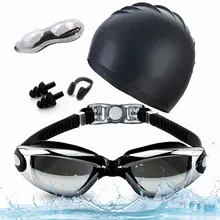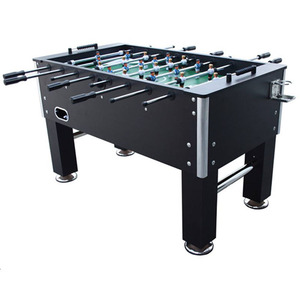How is table soccer played?
Table soccer, commonly known as foosball, is a spirited table game emulating soccer involving two players or teams of two. There are different types of table of soccer, such as American, Spanish, or French table soccer and a few others, each with its construction and playing rules. The table soccer game commences with a serve, where a player from each team propels the ball into play. Controlling designated rods, each player maneuvers corresponding figures to navigate the field.
The rods closest to the goal direct goalkeepers, the middle rods oversee midfield players, and the end rods handle strikers. Players manipulate their figures to kick the ball, aiming to score goals in the opponent's net. Defensive strategies involve using goalie figures to block shots and coordinating with teammates for effective defense. The game concludes when a predetermined time elapses or a specific goal count is reached, determining the winner.
Specific rules and etiquette govern the game. Actions such as spinning the rods excessively, jarring the table, or using hands to play the ball constitute fouls. If the ball goes out of play, it is typically reintroduced at the center by the team not responsible for its exit. Table soccer is a skill-based and strategic game requiring fair play and practice for an enjoyable experience. Players take turns serving, contributing to a dynamic and engaging competition until the conditions for victory are met.
What materials are used in making table soccer balls?
Foosballs, the essential components of table soccer, are crafted from various materials to ensure durability, optimal play, and reliable bounce. These small table soccer balls primarily utilize hard plastic, often a robust high-impact resin, as their primary constituent. The choice of this material is driven by its durability, lightweight nature, and ability to provide a consistent bounce, ensuring an enjoyable gaming experience. The stiff plastic construction also renders the foosball resistant to wear and tear, adapting it for prolonged and regular use.
Additionally, there are soccer table balls that incorporate cork in their construction. The cork is a core material that introduces a lightweight element to the foosball and contributes to a softer touch during gameplay. While not as prevalent as hard plastic foosballs, those with a cork core offer an alternative experience. Foosballs are typically small, with a standard diameter ranging from 34 to 36 millimeters (approximately 1.34 to 1.42 inches). This standardized size ensures compatibility with most soccer table games, allowing consistent and fair gameplay across different setups. The careful consideration of materials and dimensions in the construction of foosballs enhances their performance and longevity, ultimately contributing to the overall enjoyment of table soccer.










































 浙公网安备 33010002000092号
浙公网安备 33010002000092号 浙B2-20120091-4
浙B2-20120091-4